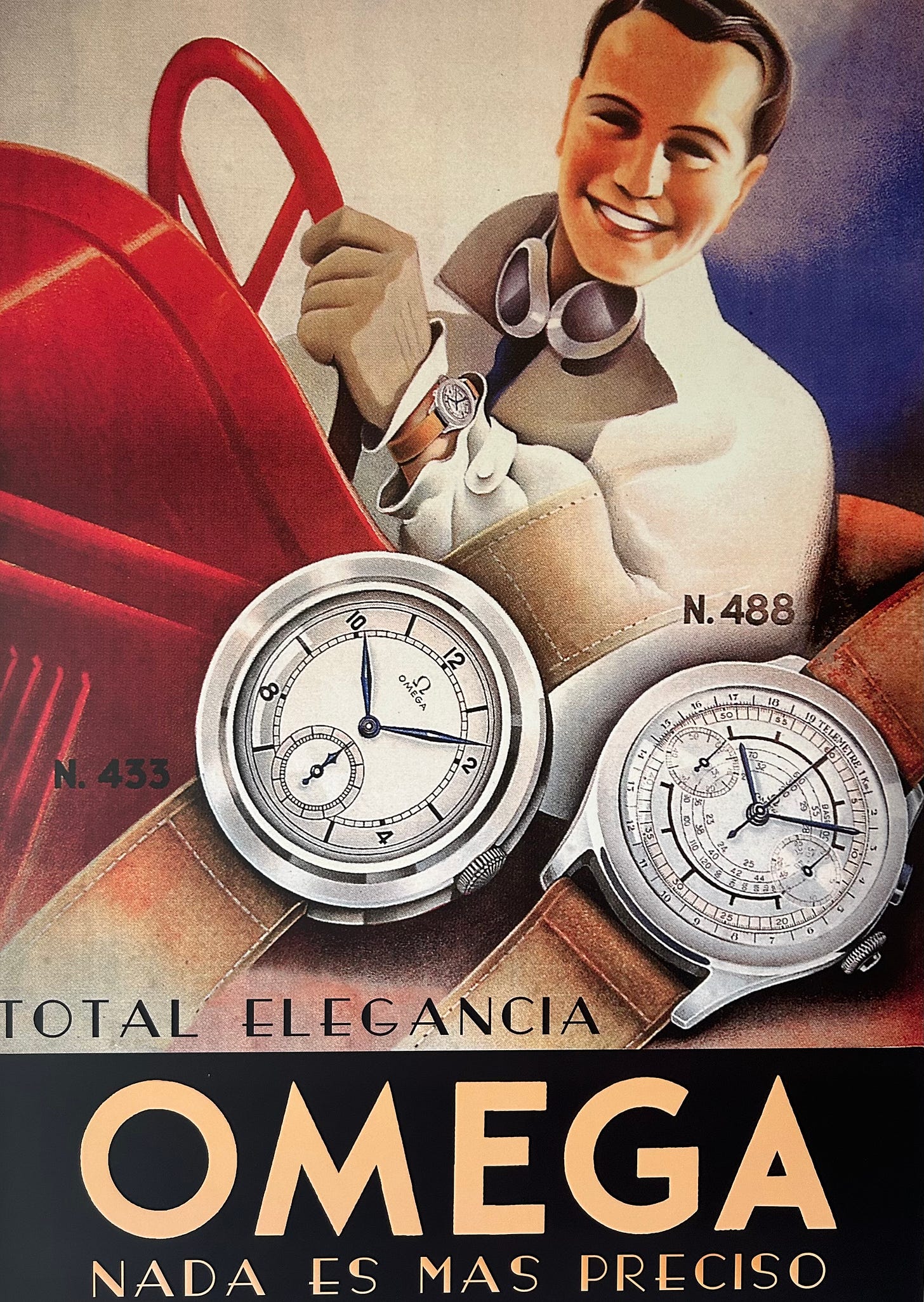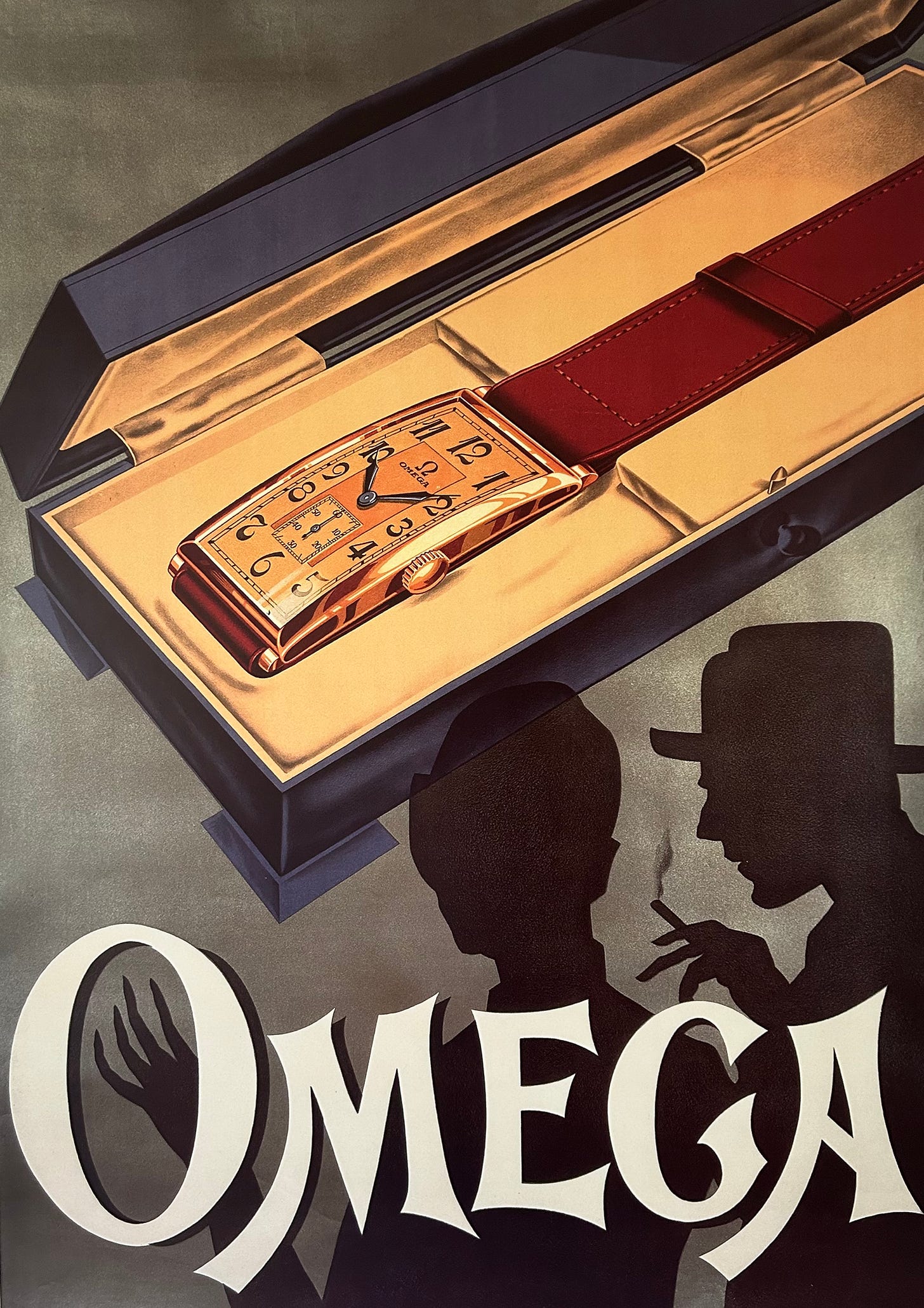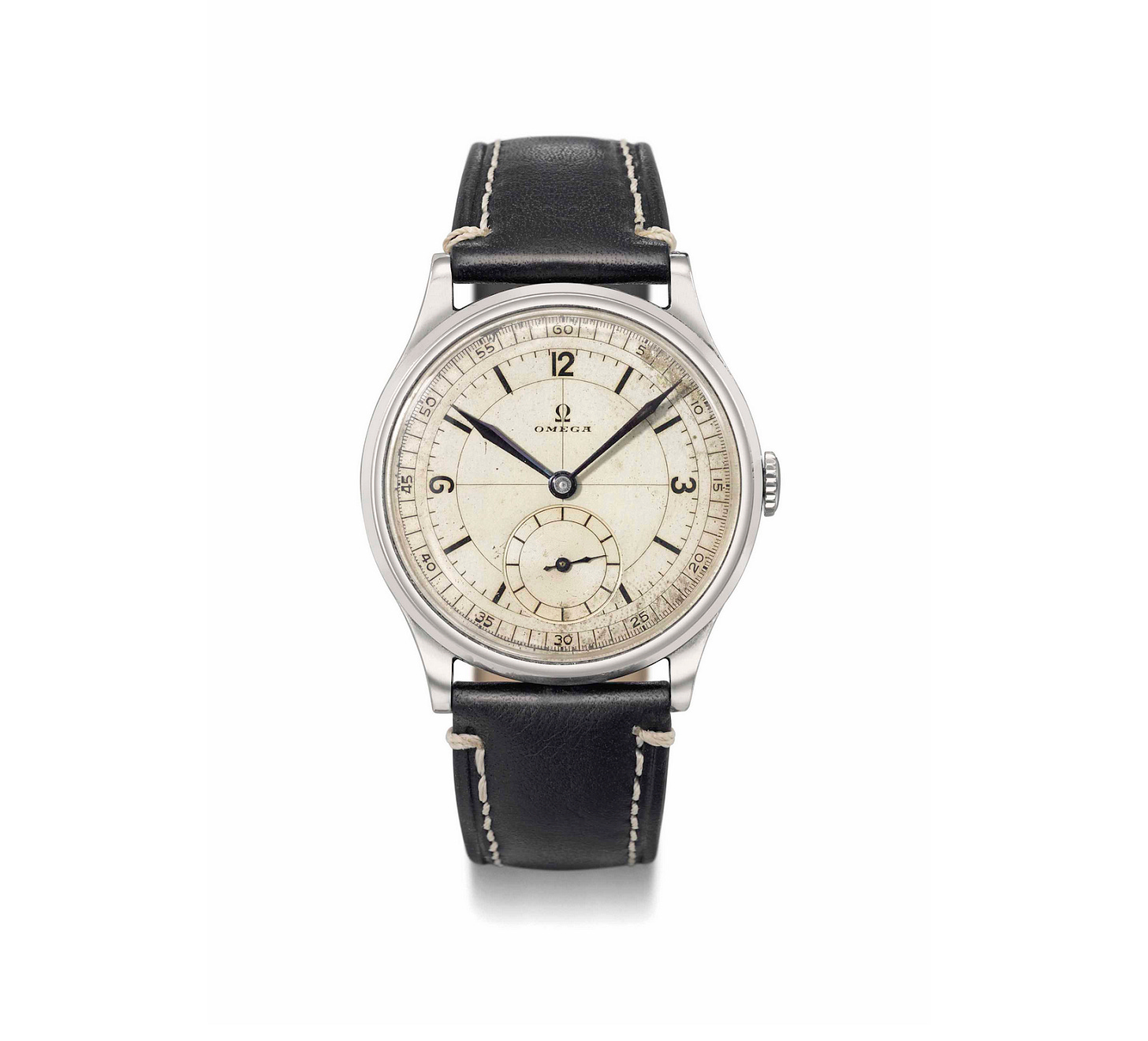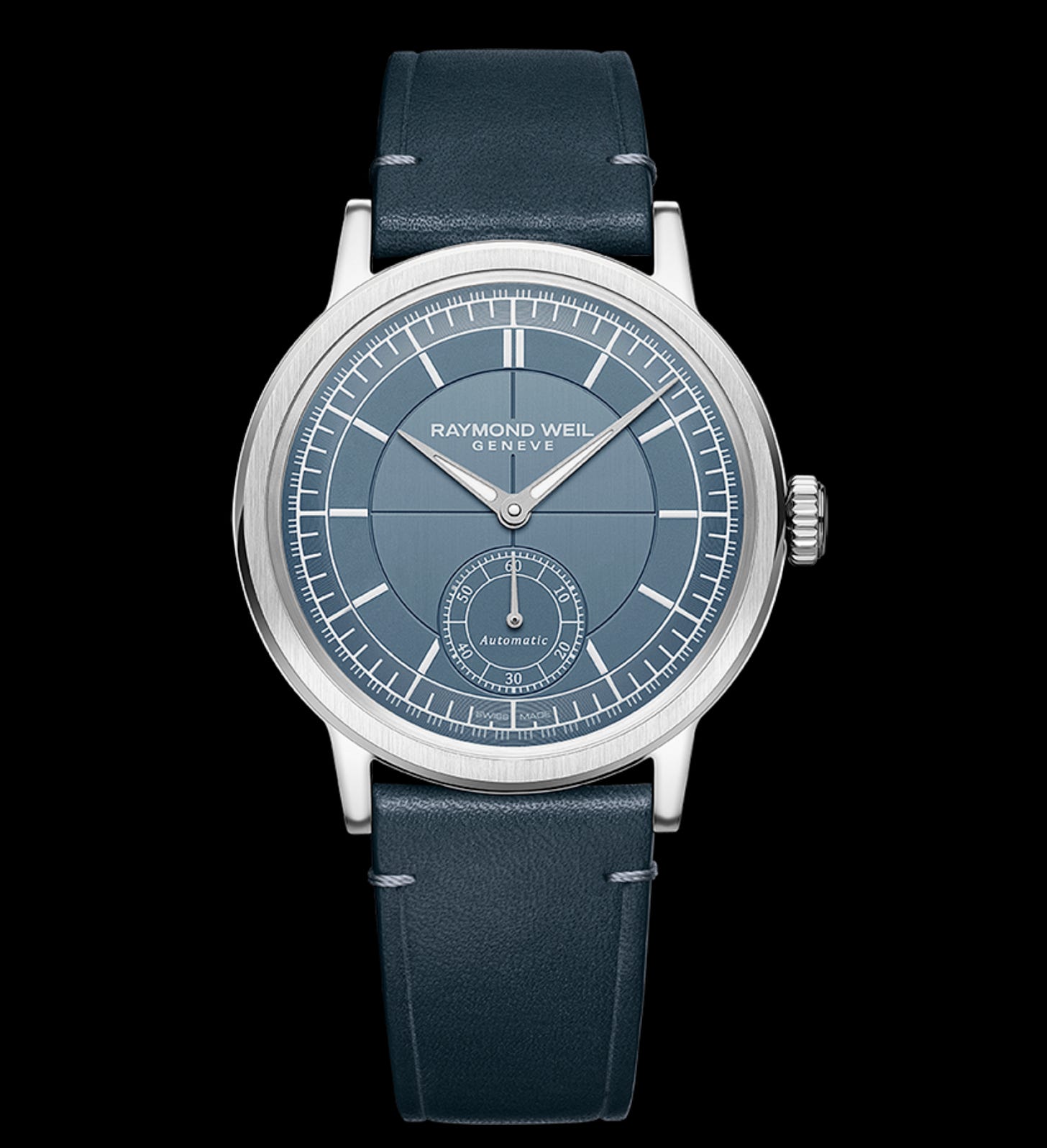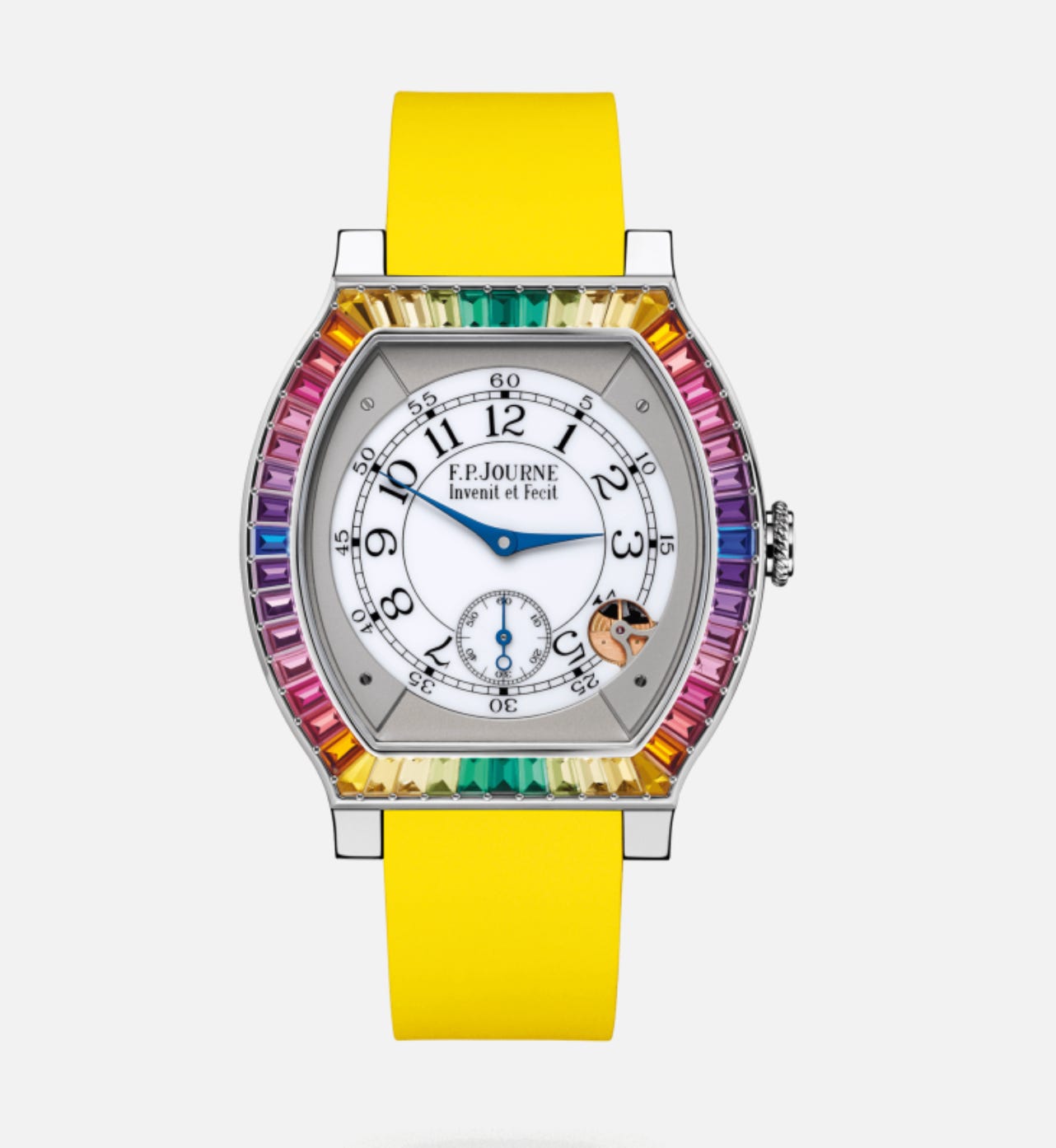Sector dials, also known as 'scientific dials' or 'radar dials', are a fascinating aspect of watchmaking design. Their unique combination of concentric circles and radial lines enhances legibility and precision and adds a touch of artistic flair to the timepiece.
Two early 20th-century posters showing Omega round-shaped and rectangular watches with sector dials.
Concentric circles serve as reference points for the hour and minute markers, bringing a sense of symmetry and balance to the dial. Radial lines extending from the center to the dial's periphery create distinct segments, making time reading more accessible.
Omega, ref. CK 859, manufactured in 1938. It was auctioned by Christie's for 3'250 CHF, in 2016. Ref. CK 859 is known for its clean sector dial design with a central chapter ring, clear numerals, and small seconds sub-dial. (Source: Christie's)
Sector dials frequently employ dual-tone or multi-tone color schemes, using contrasting hues such as black and white, blue and silver, or gold and silver to differentiate segments. This contrast improves legibility and adds a layer of visual intrigue to the dial. Despite their intricate design, sector dials maintain a minimalist and clean aesthetic; they prioritize clarity and functionality over unnecessary embellishments.
Patek Philippe Calatrava Reference 96, introduced in 1932. It was auctioned by Bonhams for 15'730 CHF, in 2019. This iconic model features a refined sector dial with minimalist aesthetics, concentric circles, and radial markers, enhancing its elegance and readability. (Source: Bonhams)
The association of sector dials with the 1920s and 1930s is deeply rooted in the artistic style codes of the time. The Art Deco movement, emphasizing geometric shapes, clean lines, order, and symmetry, heavily influenced the design of sector dials.
A Universal Genève Compur, 1934 circa. It was auctioned by Christie's for 58'750 CHF in 2016. The chronograph features a sector dial that combines functionality with elegance, displaying multiple concentric circles and radial markers for precise timekeeping. (Source: Christie's)
Technological advancements in watchmaking during the 1930s and 1940s significantly improved the accuracy and reliability of timepieces, making sector dials a popular choice for high-precision watches. Their straightforward, segmented design was crucial for precise time reading, especially for professionals such as aviators, engineers, and scientists.
During World War II, the need for functional and dependable watches increased, and sector dials were commonly used in military watches for their readability and precision. This made them practical for soldiers and officers needing quick and accurate time checks under various conditions.
A resurgence in popularity
Watches with sector dials have enjoyed a resurgence in popularity since the 2000s. This revival is driven by nostalgia, modern reinterpretations, and the enduring appeal of their precise and symmetrical design.
In recent years, many watch brands have searched their archives to reissue classic models from the 1930s and 1940s, including those with sector dials.
Modern reissues and interpretations often feature updated materials, movements, and design refinements, making them appealing to collectors and those looking for everyday wear. Additionally, many modern sector dial watches are produced in limited editions, enhancing their desirability and collectible status.
The Raymond Weil Millésime Automatic Small Seconds won the Challenge Watch Prize at the 2023 Grand Prix d'Horlogerie de Genève (GPHG). The self-winding Millésime features a sector dial design that combines contemporary and vintage elements. (Source: Raymond Weil)
The enduring appeal of sector dial watches is a testament to their perfect balance of form and function. From their roots in the early 20th century to their resurgence in modern times, these watches exemplify the best watchmaking artistry. Their straightforward, symmetrical design resonates with watch collectors and enthusiasts who value aesthetic beauty and precision.
The F.P. Journe Élégante 48 mm "Gino’s Dream" is a special edition watch that features a "Flat Tortue" titanium case. Concentric circles in the center of the dial define the sectors for the hours and minutes. (Source: F. P. Journe)



